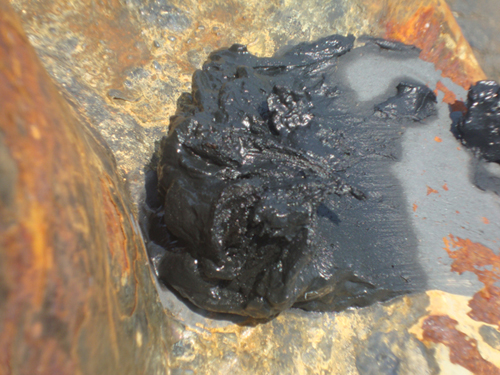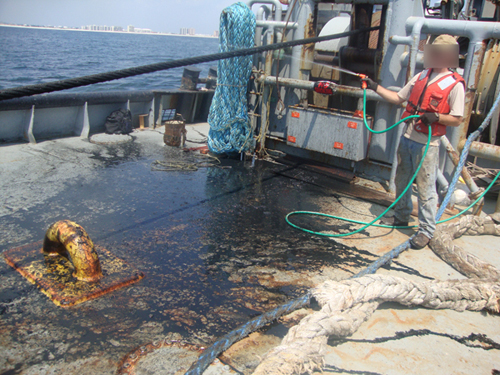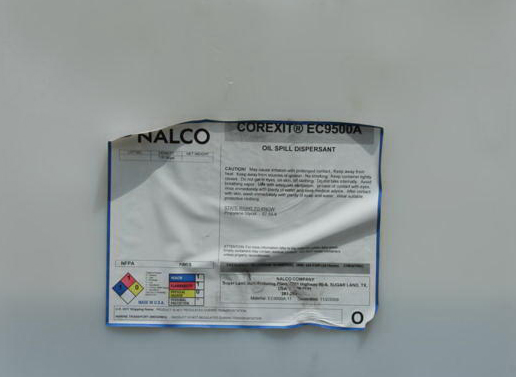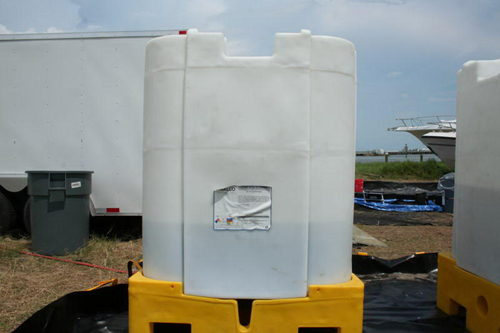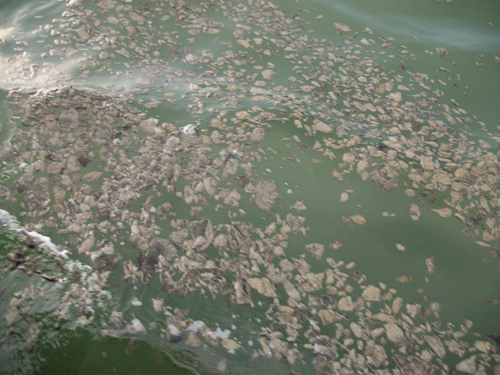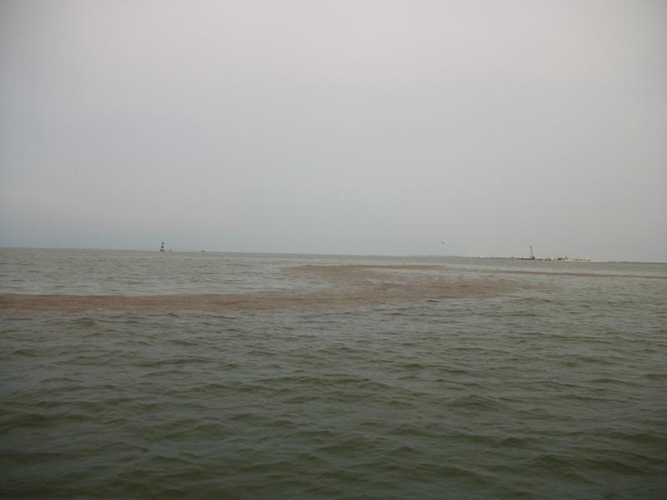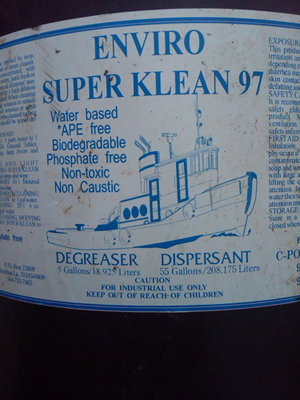BP’s Crude Oil May Be Radioactive
Courtesy of Washington’s Blog
New Orleans attorney Stuart Smith knows something about radiation from oil drilling:
Smith is well known for his role as lead counsel in an oilfield radiation case that resulted in a verdict of $1.056 billion against ExxonMobil for contaminating land it leased from the Grefer family in Harvey, Louisiana –– and attempting to cover it up.
***
The court stated that from June 1986 to March 1987, “Exxon officials intentionally withheld information,” and that the company “knew the [radioactive] scale posed a direct danger to the physical health of those workers.” Oilfield waste, or TERM, is primarily composed of radium, a highly radioactive chemical element. Exposure to radium is known to cause a variety of devastating illnesses, including cancer. Radium’s impact on the human body is particularly acute because it is similar chemically to calcium –– and as such is frequently absorbed into bones after entering the body.
But at least there’s no radiation being released from BP’s oil spill in the Gulf, right?
Well, as Smith wrote on August 4th:
This is directly from the EPA website discussing oil drilling activity:
“These processes may leave behind waste containing concentrations of naturally-occurring radioactive material (NORM) from the surrounding soils and rocks. Once exposed or concentrated by human activity, this naturally-occurring material becomes Technologically-Enhanced NORM or TENORM. Radioactive materials are not necessarily present in the soils at every well or drilling site. However in some areas of the country, such as the upper Midwest or Gulf Coast states, the soils are more like to contain radioactive material.”
“Radioactive wastes from oil and gas drilling take the form of produced water, drilling mud, sludge, slimes, or evaporation ponds and pits. It can also concentrate in the mineral scales that form in pipes (pipe scale), storage tanks, or other extraction equipment. Radionuclides in these wastes are primarily radium-226, radium-228, and radon gas. The radon is released to the atmosphere, while the produced water and mud containing radium are placed in ponds or pits for evaporation, re-use, or recovery.”
“The people most likely to be exposed to this source of radiation are workers at the site. They may inhale radon gas which is released during drilling and produced by the decay of radium, raising their risk of lung cancer. In addition, they are exposed to alpha and gamma radiation released during the decay of radium-226 and the low-energy gamma radiation and beta particles released by the decay of radium-228. (Gamma radiation can also penetrate the skin and raise the risk of cancer.) Workers following safety guidance will reduce their total on-site radiation exposure.”
It’s time BP comes clean as to the levels and amounts of radioactive material released from this oil spill.
Here’s the EPA website which Smith is quoting.
This is not to say that radiation is being released from the well at dangerous levels for the general public. Obviously, BP and the government should be pressed to release all test results from radiation testing. I have no knowledge of dangerous levels, and I’ll assume for now that radiation levels in the Gulf as a whole are low.
However, for the clean up workers, and when it is concentrated in landfills, crude oil from the Gulf might be a real health threat. As Smith writes:
This is all bad enough at the spill and cleanup sites, and it’s not nearly the near-term danger of all the toxins in the oil-dispersant stew. But it can become a danger when you start concentrating it in normal landfills. Remember, oil was exempted from hazmat regulations for political reasons, not because it’s not hazardous.
And, as far as we can tell, nobody is even testing the BP waste going into those landfills and if the oil company knows radiation levels, we can expect them to keep it secret. Hey, this is the company that required a Congressional order and a Federal Court Subpoena just to release video of the spill … we have no way of knowing what else they’re not telling us.
And it’s not comforting that the EPA, which allowed BP to use toxic dispersant to hide the oil and is now minimizing what’s left through bogus science, and the Coast Guard, which allowed dispersant use even in excess of what the EPA approved, are in charge of all this. And the EPA knows better, of course.
Oil Tests Positive for Dispersants in the Mississippi Sound
The Press-Register notes today:
Lumpy, degraded oil collected in the Mississippi Sound has tested positive for several of the main ingredients in the Corexit dispersant used in connection with the Deepwater Horizon oil spill, according to scientists working for a New Orleans-based lawyer.
Officials with the federal government and BP PLC have maintained throughout the oil spill that no dispersant products have been used near shorelines in Alabama or Mississippi.
***
Marco Kaltofen, part of the group of scientists who found the oil in Mississippi Sound, said it was impossible to determine when the dispersant had been applied to the oil. Results from the tests, which were conducted in a Colorado laboratory, indicated the oil was from the Deepwater Horizon well, he said.***
“EPA samples found only one indication of dispersant near shore in Louisiana. That location was sampled several times with no other detection,” U.S. Environmental Protection Agency spokeswoman Terri White said in a Monday e-mail. “There is no authorization to apply any dispersant at this time. If anyone has information about this, they need to report it immediately so it can be investigated and referred to law enforcement.”***
Smith, the lawyer who funded Kaltofen’s sampling expedition, discounted the notion that dispersants had not been used near shore.“I personally saw C-130s applying dispersants from my hotel room in the Florida Panhandle. They were spraying directly adjacent to the beach right at dusk,” said Smith. “Fishermen I’ve talked to say they’ve been sprayed. This idea they are not using this stuff near the coast is nonsense.”
Other tests are coming back positive for dispersant as well.
BP Tells Experienced Gulf Fishermen that They Don’t Know the Difference Between Oil and Seafloor Muck
The Pensacola News Journal notes:
Recreational fisherman Mark Fuqua, 47, of Pensacola, who has fished the waters from Destin to Pensacola most of his life, discovered just how big the mess is on the first day he struck out to drop a line in the water since the fishing ban was lifted two weeks ago.
After a day of fishing in several areas of the bay on Wednesday, his boat, anchor and cast net were covered in oil.
"I’ve never seen anything like it," he said. "I was fishing in front of Palafox Pier and pulled up my anchor, and it looked like it had black mud on it. I reached down to try to wipe it off and it was all greasy, like greasy sand."
The anchor was dropped in 20 feet of water.
[Scott Piggott, who heads the Escambia and Santa Rosa cleanup operation for BP] said the reports from fishermen about finding oil often are not reliable.
"I’ve heard accounts of people who hold up their anchors that have this black stuff on it," he said. "I can’t tell you how many times we’ve gotten reports from fishermen with sightings of sheen and oil. Ninety-nine percent of the time, these reports turn out to be organic material."
Fuqua said Piggott’s statement "sounds typical."
"BP is really counting on that out-of-sight, out-of-mind thing. It’s there and they know it," he said. "They need to be exposed and made to do something about it."
Sure, and the oil plumes and dispersant which experienced scientists think they are finding in the Gulf are really just kelp, and the dead animals which people see are really just sleeping, and the rashes and breathing problems coastal residents exposed to the dispersant are suffering are really just allergies.
Confirmed: Corexit Still Being Sprayed in the Gulf
Veteran chemist Bob Naman says that Corexit is still being sprayed in the Gulf, and that he found 13.3 parts per million in Cotton Bayou, Alabama.
As I pointed out last week:
Parts per million might not sound like much.
But the EPA has found that exposure to 42 parts per million killed 50% of mysid shrimp within 4 days (and most of the remaining shrimp didn’t last much longer).
In response to Naman’s findings, the mayor of Orange Beach – the town located on Cotton Bayou – said that the City would conduct its own, independent tests:
The City’s test results have now come back, showing 66 parts per million of dispersant.
The City Engineer for Orange Beach – Kit Alexander – also states that the EPA sets the screening level for dispersant at 750 parts per million (see above video). In other words, the EPA doesn’t even test for Corexit at concentrations of less than 750 ppm, even though Corexit at much lower concentrations kills marine life.
I have personally been copied with emails sent to the Coast Guard documenting continued spraying of Corexit.
And yesterday, toxicologist Dr. Ricki Ott sent the following letter to the EPA which summarizes evidence of ongoing use of dispersants in the Gulf:
Sam Coleman August 27, 2010
U.S. EPA, Region 6
1445 Ross Ave.Dallas, TX 75202-2733 Via email: coleman.sam@epa.gov
Re: Documentation of continued dispersant spraying in near shore and inland waters from Florida to Louisiana (despite contrary claims by USCG and BP) and documentation that dispersants made oil sink
Dear Mr. Coleman,
s in Destin and 40 miles east in St. Joe Bay, just days before a fish kill of croaker, flounder, trout, and baitfish on August 5.
Perdido Pass, AL
Aug. 24: Received report of oil debris from anchor chain while weighing anchor at position 30*15.6 N 87*32.7 W, 0.6 nm east of Perdido Pass sea buoy. Samples taken.
Dauphin Island, AL
Aug. 21: Fisherman Chris Bryant documents Corexit 9500 use
Aug. 24: Washington’s Blog interview with chemist Bob Naman
- Bob Naman is the analytical chemist who performed the tests featured in WKRG’s broadcast. He was interviewed by or an August 24 report. Highlights include:
- Naman found 2-butoxyethanol in the Cotton Bayou sample. [Ingredient in ‘discontinued’ Corexit 9527.]
- Naman said found no propylene glycol, the main ingredient of Corexit 9500.
- Naman said he went to Dauphin Island, Alabama last night and while there observed many 250-500 gallon barrels which were labeled Corexit 9527. Naman took pictures that he will soon be sharing.
- Naman said he saw men applying the Corexit 9527 while he was in Dauphin Island and also in Bayou La Batre, Alabama.
- Naman said the Corexit 9527 is being haphazardly sprayed at night and is impacting beach sands in a highly concentrated form.
Bayou La Batre, AL
Aug. 4: Fisherman Chris Byrant documents oil-dispersant in Mississippi Sound, northwest of Katrina Cut, in an area open to fishing in state waters between Dauphin Island and Bayou La Batre
Aug. 19, Aug. 21: Rocky Kistner with NRDC documents use of Corexit 9527a and Corexit 9500 and oil-dispersant visible sheen in area open to fishing in state waters
Aug. 23: Natural Resources Defense Council Switchboard posting
We spotted huge plastic containers marked with Corexit warning labels on the dock public docks near Bayou La Batre. …
The next day at a town hall meeting in Buras, LA, BP Mobile Incident Commander Keith Seilhan was asked about the use of chemical dispersants. "We are not using dispersants and haven’t been for some time," he said.
But when asked whether contractors who operate in state waters could be, he said he could not be certain. "We have lots of contractors, but no one should be using them. If they are, we need to know about it and stop it."Long Beach, MS
Aug. 8: Fisherman James "Catfish" Miller sampled the subsurface oil plume (VIDEO)Miller tied an oil absorbent pad onto a pole and lowered it 8-12 feet down into deceptively clear ocean water. When he pulled it up, the pad was soaked in oil, much to the startled amazement of his guests, including Dr. Timothy Davis with the Department of Health and Human Services National Disaster Medical System. Repeated samples produced the same result. Three weeks earlier, there had been a massive fish kill along the same shoreline from Gulfport to Pass Christian.
Aug. 23: The methods for sampling subsurface oil used by Mr. Miller are also being used by Incident Command for the Deepwater Horizon as evidenced in a declassified document (p. 3).
Hancock County, MS
Aug. 23: Dispersant container found in Bayou Caddy Hancock County marsh. White foam indicative of dispersant use in marsh. Samples taken and being analyzed.
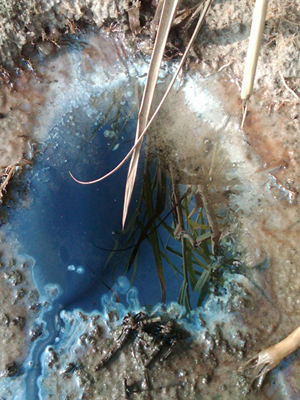
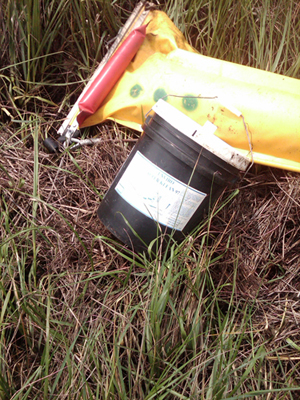
Barataria, LA
July 31: Documentation of oil in Barataria Bay.Venice, LA
Aug. 11 (reported): Contractor sick from dispersant sprayingSummary: Based on these documents, and more, we believe that dispersant spraying in inland and near shore waters across the Gulf of Mexico from Louisiana to the western Florida panhandle is occurring now and has continued unabated (before) and since July 19, the date that the seafood safety panel proclaimed was the last day dispersants were sprayed. Based on these documents, and more, we believe that the dispersant spraying in inland and near shore waters is being conducted for the sole purpose of sinking the visible oil, an activity that is supposedly illegal. According to the University of South Florida, dispersed oil micro-droplets have been documented throughout the Gulf water column and are likely to affect the entire ecosystem.
The inability of the federal and state agents who attended the Dockside Chat in Jean Lafitte, LA, on Aug. 25 to find recent subsurface oil and ocean bottom oil or dispersant spraying activity in inland or near shore waters gives us zero confidence in these same agencies’ declaration that they can find no oil or dispersant in Gulf seafood product.
Sincerely,
Riki Ott, PhD
Ultimate Civics Project
Earth Island Institute
POB 1460
Cordova, AK 99574
970-903-6818
www.RikiOtt.com970-903-6818
www.RikiOtt.com
Mission (Not) Accomplished on Oil Spill
You’ve probably heard that BP has capped the oil well and the almost all the oil has been cleaned up, right?
Meanwhile, back in the real world:
- A tidal wave of oil is, supposedly, about to hit shore: "A 200-foot-by-2-mile swath of oil is going to make landfall on Grand Isle in the next couple of days"
- Much of the oil has only been temporarily hidden by continued spraying of dispersant, which is causing the oil to sink, where common oil-eating microbes can’t break it down (and the jury is out on other species), but will instead be washed up for years by the action of hurricanes
- The boys tried to fish out 3 pieces of broken pipe (one of them 3,000-3,500 feet long and attached to the blowout preventer), but failed miserably, apparently because of the fragile condition of the pipe
- Now the three stooges experts are going to try to remove the blowout preventer anyway, even if the pipe sticks to it, but may damage the casing hangar in the process, which would mean oil is leaking (and see this)
As oil industry expert Bob Cavnar writes today:
Admiral Allen announced today that BP’s fishing job being undertaken on their Mississippi Canyon Block 252 well has been called off due to total failure. You’ll recall that I disagreed with the procedure when it was announced on the 21st, believing it was unwise and risky. After now attempting to fish out the drill pipe (actually 3 pieces) for several days, they have called off the job after completely failing at achieving their goal. Previously, Adm. Allen had said that they wanted to get all the drill pipe out before pulling the BOP (which I also think is unwise), and replacing it with the BOP from the DDII before completing the relief well.
***
They’re going to pull the damn BOP anyway. That’s right, they’re going to pull the BOP anyway. What’s amazing is that they’re pulling it with an estimated 3,000 feet of drill pipe hanging in a set of rams, as well as two other smaller pieces in the stack and God knows what else. Admiral Allen said they’re setting an overpull limit of 80,000 pounds over stack weight to pull it free, worried that more would dislodge the casing hanger and packoff that are supposedly in the casing hanger. They couldn’t get the camera in that far down, but they still continue to assume that all that is somehow still in place after the well blowing out and flowing for 87 days, probably right through where they say the packoff is set. Not likely. Allen says they’re going to actually try to pull the drill pipe, still hung in the rams and then, while suspending the BOP above the casinghead, cut the drill pipe with ROVs and drop it back in the well.
Probability of success of getting that done? Almost zero.
As Rick Steiner told Dan Froomkin this week:
I smell politics all over it. The only plausible explanation is they were in a rush to hang the ‘Mission Accomplished’ banner.


